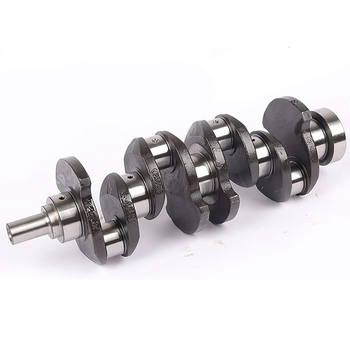The Intricacies of Crankshaft Phasing
Have you ever wondered how the crankshaft phasing in V-configuration engines affects power and smoothness? To be honest, it's a captivating topic. The positioning and timing of crankshaft throws play a significant role in engine performance. By understanding the nuances, we can unlock improved power and smoother operation.
The Magic Behind V-Configuration Engines
V-configuration engines have two banks of cylinders arranged in a 'V' shape. Interestingly enough, this design allows for better balance and reduced vibrations compared to inline engines. However, the key to optimizing power and smoothness lies in crankshaft phasing.
The Impact on Engine Power
Crankshaft phasing can significantly influence engine power. Proper phasing ensures that each cylinder fires at the ideal moment, providing maximum force to the crankshaft. Consequently, this results in better engine efficiency and increased power output. In my experience, even minor adjustments to crankshaft phasing can yield noticeable improvements.
Optimizing Crankshaft Phasing for Power
Many experts agree that the most effective crankshaft phasing for power in V-configuration engines involves a 90-degree or 180-degree separation between cylinder firings. This arrangement ensures consistent torque and power delivery throughout the engine's RPM range.
The Impact on Engine Smoothness
As it turns out, crankshaft phasing also plays a critical role in engine smoothness. By staggering the cylinder firings, engine vibrations are reduced, resulting in a smoother ride. This is particularly important in V-configuration engines, where the closely spaced cylinders can exacerbate vibrations if not properly phased.
Optimizing Crankshaft Phasing for Smoothness
To achieve optimal engine smoothness, crankshaft phasing should be adjusted to ensure evenly spaced cylinder firings. This can be achieved through various methods, including changes to the crankshaft design or adjustments to the firing order. I've found that a 180-degree separation between cylinder firings often provides the best balance between power and smoothness.
Practical Application: Tips for Optimizing Crankshaft Phasing
Conclusion: The Power of Crankshaft Phasing
In conclusion, crankshaft phasing is a critical aspect of V-configuration engine performance. By understanding its impact on power and smoothness, you can make informed decisions to optimize your engine's performance. So, why does this matter? Well, harnessing the power of crankshaft phasing can lead to improved fuel efficiency, reduced wear and tear, and an overall better driving experience. If you're looking to get the most out of your V-configuration engine, crankshaft phasing is an essential consideration.




